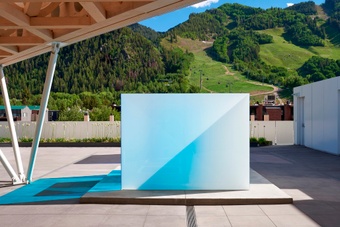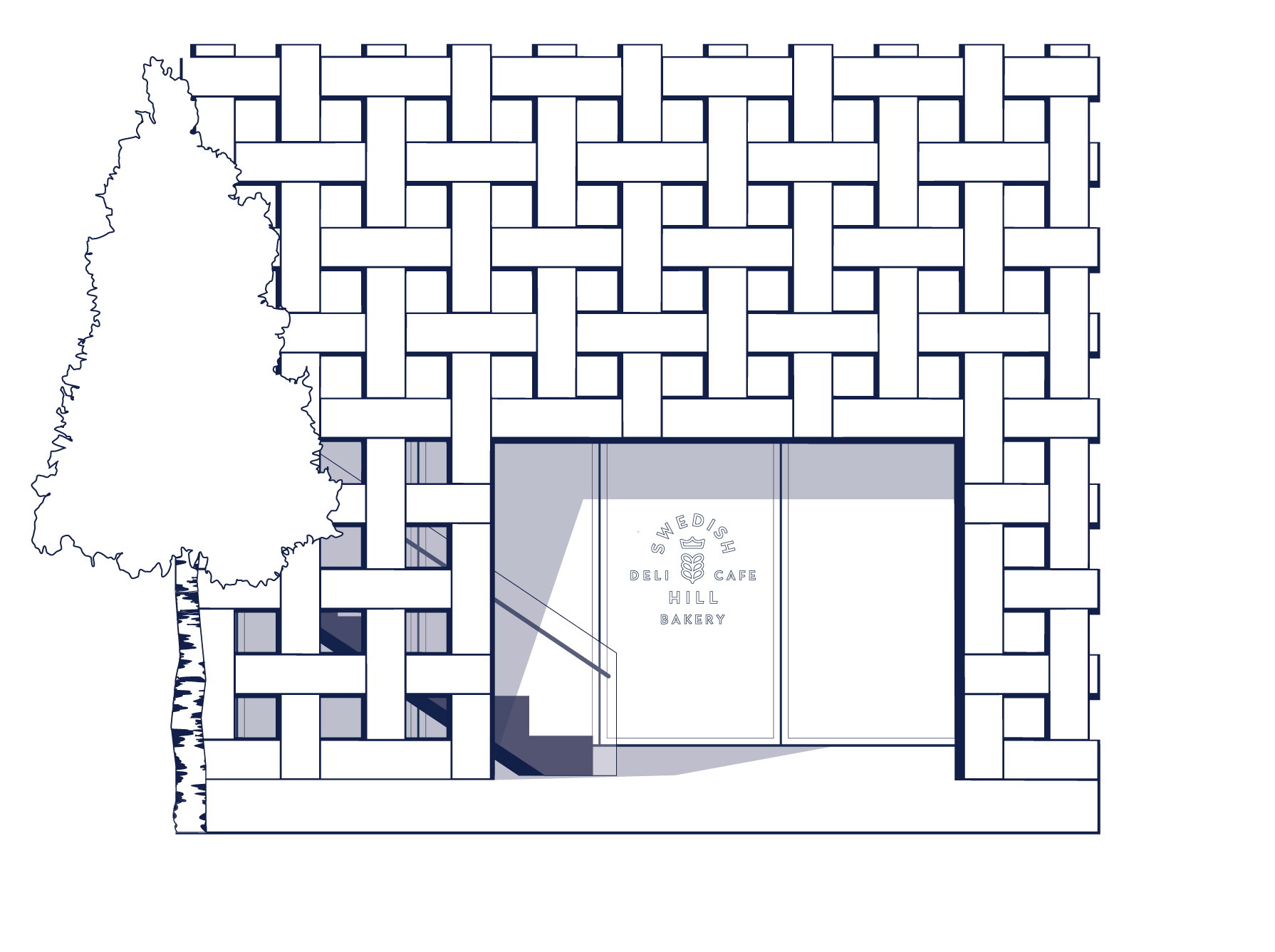Aspen Art Museum
- Categories
- All events
- Talks and Lectures
- Member Events

- For more information on how you can join the AAM, please visit the Street Level Visitor Information Desk, inquire in the Shop, or call 970.925.8050.

- Swedish Hill Aspen is open on our Rooftop from 8AM–3PM

- Aspen Art Museum is an artist-founded institution dedicated to supporting artists in the development of bold ideas to shape our museum and the field of art today.
Artists
Related Events
In the House of the Trembling Eye is an expansive group exhibition staged by the London-based artist Allison Katz across the entirety of the Aspen Art Museum, organized in collaboration with the Archaeological Park of Pompeii. Marking the Aspen Art Museum’s 45th anniversary and the 10th anniversary of its Shigeru Ban-designed building, the show brings to the fore unexpected affinities among over one hundred artworks and objects in varied styles from different epochs, celebrating the inexhaustible capacity of painting to generate new conversations across time.
Invited to bring to life an exhibition incorporating works from personal art collections in and around Aspen, Katz approaches curation and display as extensions of the act of painting itself. In the House of the Trembling Eye will present her works, both new and recent, alongside artworks by over fifty artists as well as a series of fragments of frescoes from Pompeii. With this project, Katz tackles the definitions of public and private experiences of art in a non-collecting institution. The fluidity and mixed use of spaces in ancient domestic environments, such as those found in Pompeii, seen by the artist as a precursor of the contemporary museum, become key organizational principles for the exhibition architecture.
The artworks are displayed within a specially designed environment that grafts the layout of an ancient Pompeian domus (home) onto the museum, shifting the atmosphere across all three floors of the building. Echoing ancient methods of choreographing the gaze through architectural design, using through-way views, raised floors, partitions, and curtains to intimately orchestrate visitors’ movements and interactions, Katz’s exhibition considers some of the fundamental questions of images: how they may inhabit shared surroundings and one’s own mind, and how they may influence past and future patterns of thinking.
This exhibition will be the first in North America to unite contemporary art with these ancient fresco fragments, many of which have never previously traveled to the United States. Katz establishes formal and symbolic relationships between the ancient fragments and artworks from the twentieth and twenty-first centuries, bringing into focus the emotional connections between their subjects by way of juxtaposition. Cultural residues, art history, and autobiography thus enter into dialogue with memory, the unconscious, and questions of taste.
For over a decade, Katz has investigated the ways in which aesthetic practices link and absorb personal narrative, commodity culture, information systems, and art history. Her diverse, often humorously self-aware imagery traverses painting, posters, ceramics, and installations. It is through the act of revisiting and transforming her own motifs that the artist creates a language and lineage from one work to another. Her staging of exhibitions is inextricably linked to the practice of painting, and often an artwork in and of itself.
In the House of the Trembling Eye brings to the fore existential and philosophical questions that are key to deciphering the power of painting—from the autonomy of the medium as a discrete object to its site-specificity and mutability in relation to a display apparatus. For Katz, surface is depth, and the frame is a portal for making sense of the world. The exhibition proposes a study of painting’s endless accretion throughout history. In Katz’s words, “Painting is for me a call and response, a question posed across time, techniques, and traditions to see who and what answers … because at its core, painting is a conversation.” Guided by the exhibition’s architecture, visitors join the chorus of these dialogues, implicated in painting’s ceaseless performance of imagining.
Exhibiting artists include: Gertrude Abercrombie, Rodolfo Abularach, Julio Alpuy, Janine Antoni, Herbert Bayer, Lynda Benglis, Kerstin Brätsch, Joan Brown, Maurizio Cattelan, Vija Celmins, Marc Camille Chaimowicz, Jonathan Lyndon Chase, René Daniëls, Marlene Dumas, Jana Euler, Sylvie Fleury, Lucio Fontana, Ellen Gallagher, Isa Genzken, Jeffrey Gibson, Robert Gober, Wade Guyton, Peter Halley, Hugh Hayden, Eva Hesse, Damien Hirst, Jim Hodges, Roni Horn, Luchita Hurtado, Jacob Isaacszoon van Swanenburg, Rashid Johnson, Anish Kapoor, Allison Katz, Mike Kelley, Ellsworth Kelly, Bharti Kher, Karen Kilimnik, Yayoi Kusama, Nancy Lupo, Kerry James Marshall, Julie Mehretu, Joan Mitchell, Artist’s studio ephemera from the studio of Ron Mueck, Jill Mulleady, Elizabeth Murray, Alice Neel, Mary Obering, Elizabeth Peyton, Susannah Phillips, Gerhard Richter, Dorothea Rockburne, Ed Ruscha, Amy Sillman, Alina Szapocznikow, Paul Thek, Rirkrit Tiravanija, Fredrik Værslev, Cecilia Vicuña, Charline von Heyl, Cathy Wilkes, Lynette Yiadom-Boakye, Lisa Yuskavage, and unknown Pompeiian wall painters.
In the House of the Trembling Eye is an exhibition staged by Allison Katz. Research and concept development by Katz and Stella Bottai, Senior Curator at Large, in curatorial dialogue with Nicola Lees, Nancy and Bob Magoon Director; Daniel Merritt, Director of Curatorial Affairs; and Simone Krug, Curator at the Aspen Art Museum. Exhibition architecture is designed by Katz with Caitlin Tobias Kenessey.
In the House of the Trembling Eye is organized in collaboration with the Archaeological Park of Pompeii. The exhibition research was developed in the context of Allison Katz’s Digital Fellowship as part of the Pompeii Commitment. Archaeological Matters program at the Archaeological Park of Pompeii, Italy. Additional research support was provided by the Department of Asian, African and Mediterranean Studies at Università degli Studi di Napoli L'Orientale, Naples, Italy.
The exhibition is accompanied by a new catalogue to be released in Winter 2024, with new contributions from Nuar Alsadir, Stella Bottai, Anna Civale, Hannah Johnston, Allison Katz, Simone Krug, and Ariana Reines. The book is designed by Studio Mathias Clottu and made possible with support from the ASOM Collection.
Exhibition Guide
About Allison Katz
Allison Katz was born in Montreal, Canada, in 1980 and currently lives and works in London, England. She studied Fine Arts at Concordia University in Montreal and received her MFA from Columbia University in New York. Katz’s work investigates the ways in which aesthetic practices link and absorb autobiography, commodity culture, information systems, and art history. Her diverse imagery, including roosters, cabbages, mouths, fairies, and noses, appears as recurring symbols and icons that build an unending constellation of ideas and references, which transmute across the mediums of painting, posters, ceramics, and installations. Katz received widespread critical recognition for her first traveling UK solo exhibition Artery at Nottingham Contemporary (2021) and Camden Art Centre (2022). The exhibition was accompanied by the richly illustrated publication Artery, which situates itself somewhere between a monograph, an exhibition catalogue, and an artist’s book. Other recent solo exhibitions have been presented at Hauser & Wirth West Hollywood, Los Angeles, CA (2023); the MIT List Center for the Arts, Cambridge, MA (2018); Oakville Galleries, Oakville, Canada (2018); and Kunstverein Freiburg, Freiburg, Germany (2015). Notable group exhibitions include Cecilia Alemani’s The Milk of Dreams, La Biennale di Venezia, 59th International Exhibition, Venice, Italy (2022); Mixing It Up: Painting Today, Hayward Gallery, London, UK (2021); The Imaginary Sea, Fondation Carmignac, Porquerolles, France (2021); Slow Painting, curated by Hayward Touring, presented at Leeds Museum and Art Gallery, Leeds, UK; Levinsky Galley, Plymouth, UK (2020); Maskulinitäten, Bonner Kunstverein, Bonn, Germany (2019); and Paint, Also Known as Blood, Museum of Modern Art, Warsaw, Poland (2019).
About the Archeological Park of Pompeii
The Archaeological Park of Pompeii is the Institute of Italy’s Ministry of Culture that manages and protects much of the cultural heritage of the Vesuvian area. In addition to the archaeological area of Pompeii, the Park manages other sites in the area, characterized by the same history and tragic fate of the eruption of 79 AD. These are the Villa di Poppea in Oplontis, Villa Regina in Boscoreale with its Antiquarium, Villa Arianna and Villa S. Marco and the Stabiae Libero d'Orsi Archaeological Museum at the Reggia di Quisisana in Castellammare di Stabia, which together make up Greater Pompeii, a single large widespread park. The management of these sites has recently been joined by the scientific protection of the Castello di Lettere and the Real Polverificio Borbonico. As of December 2020, the Archaeological Park of Pompeii has initiated its own long-term contemporary art program, Pompeii Commitment. Archaeological Matters. This program reconfigures the archaeological site as a foundation for alternative forms of knowledge, defining a multiplicity of functions—curatorial artistic research at a distance and in situ (Digital Fellowship), digital artistic contributions (Commitment), collection of testimonies (Fabulae) and documents (Historiae), collection (Collectio), hypothetical and transdisciplinary museum (Inventory)—all of which are continually expanding, dedicated to the study and sharing of Pompeii’s multiple cognitive potential.
AAM exhibitions are made possible by the Marx Exhibition Fund.
General exhibition support is provided by the Toby Devan Lewis Visiting Artist Fund.
Additional support for In the House of the Trembling Eye is provided by the AAM National Council with special thanks to Hauser & Wirth.
The exhibition is accompanied by a new catalogue to be released in Winter 2024, with new contributions from Nuar Alsadir, Stella Bottai, Anna Civale, Hannah Johnston, Allison Katz, Simone Krug, and Ariana Reines. The book is designed by Studio Mathias Clottu and made possible with support from the ASOM Collection.




From the Exhibition
free courtesy
Amy & John Phelan
- Aspen Art Museum
- 637 East Hyman Avenue
- Aspen, Colorado 81611
- t: 970.925.8050
- f: 970.925.8054
- info@aspenartmuseum.org
| Hours |
|
Tuesday–Sunday, 10 AM–6 PM
Closed Mondays
|
© 2024 Aspen Art Museum
General operating support is provided by Colorado Creative Industries. CCI and its activities are made possible through an annual appropriation from the Colorado General Assembly and federal funds from the National Endowment for the Arts.



General operating support is provided by Colorado Creative Industries. CCI and its activities are made possible through an annual appropriation from the Colorado General Assembly and federal funds from the National Endowment for the Arts.




































































































































































































